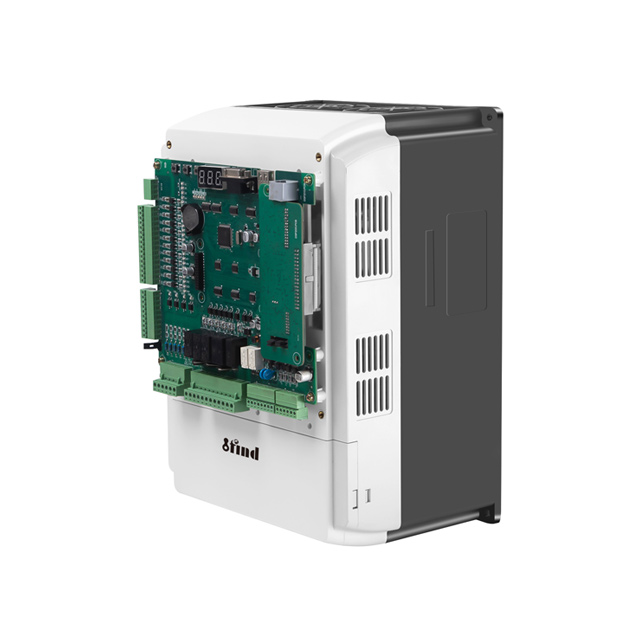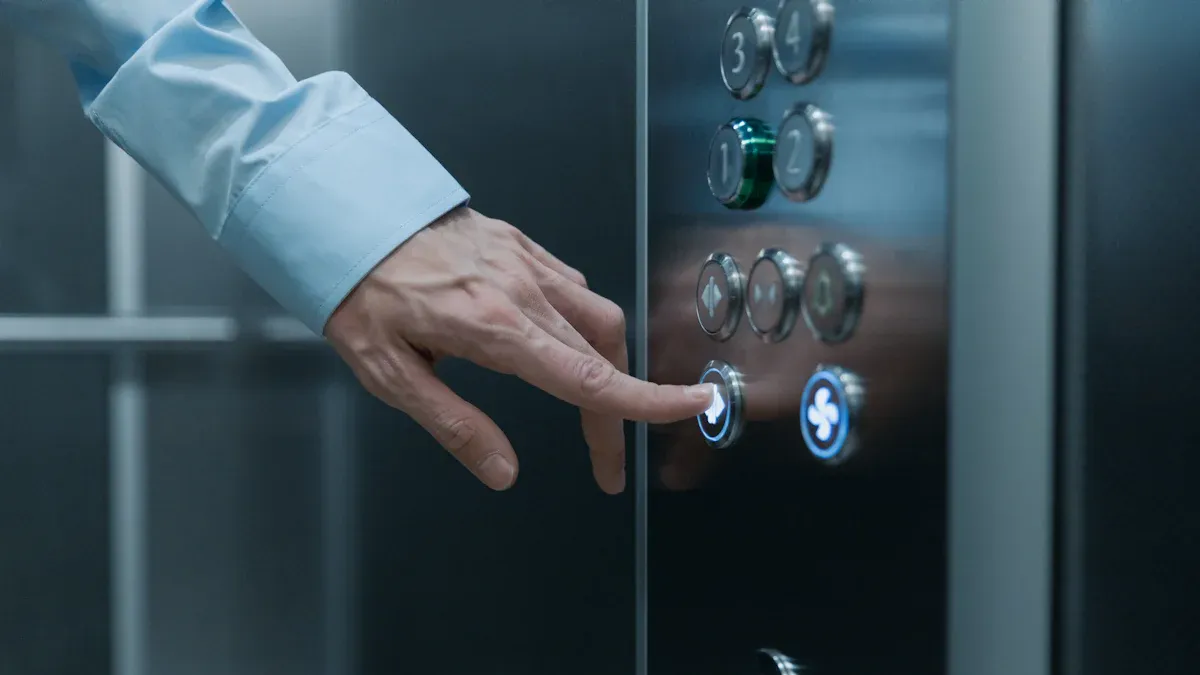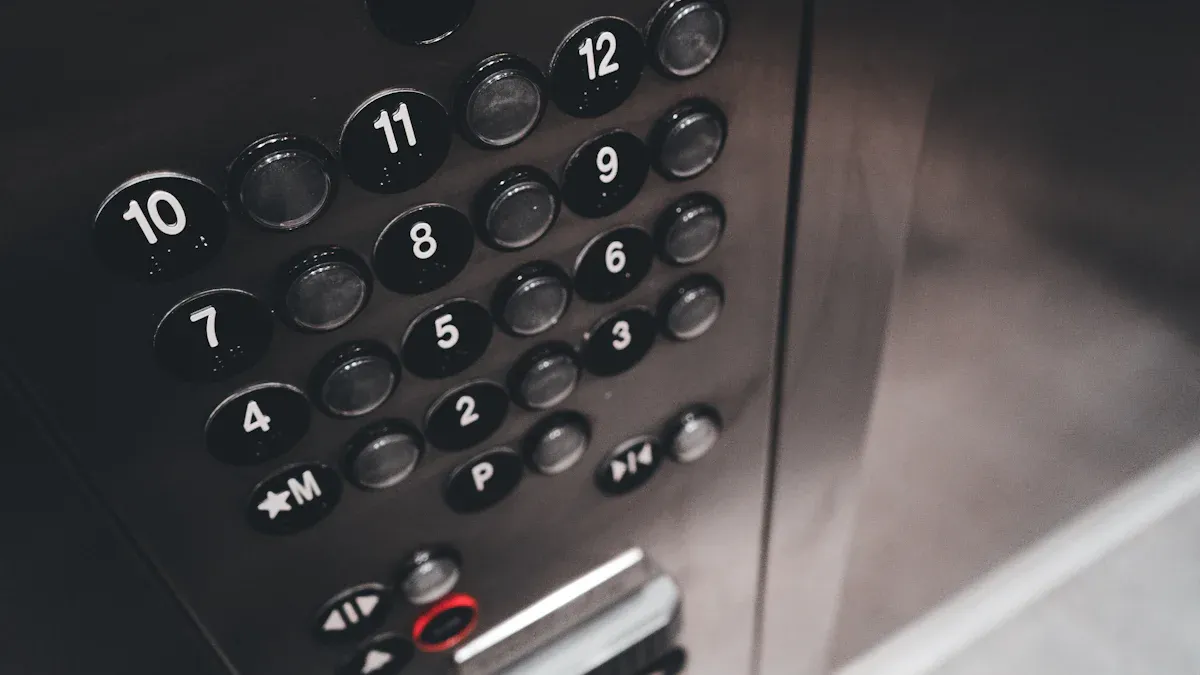

An elevator door controller is like the brain for the door system. It controls when and how the door opens or closes to keep people safe. The elevator door controller gets signals and chooses if the door should move. Every elevator needs this controller to work well and stay safe. Think of the controller as a traffic light for the elevator door. It makes sure the door opens only when it is safe. The controller checks sensors and works with other elevator parts to keep safety high.
Key Takeaways
Elevator door controllers are like the brain. They decide when doors open or close. This helps keep people safe. The door operator works with the controller. It moves the doors using motors, gears, and sensors. Safety sensors look for things in the way. They stop or open the doors to avoid accidents. Automatic and digital controllers use sensors and software. This makes doors safer and work better. Regular checks and maintenance help stop problems. They keep doors working well and make elevators safe.
Elevator Door Controller Basics

What Is an Elevator Door Controller?
An elevator door controller helps open and close the elevator doors. This device is a main part of the elevator system. It links to the elevator control panel and gets commands from it. The elevator door controller picks when the door should open or close. It checks where the elevator car is and listens for signals from the elevator control panel. The controller talks to other safety devices to make sure the door moves only at the right time.
Note: The elevator door controller works with the elevator controller, but they do different things. The elevator controller runs the whole elevator, but the door controller only handles the doors.
Main Function
The main job of the elevator door controller is to keep people safe. It does this by using signals from the elevator control panel and sensors. When the elevator stops at a floor, the controller checks if it is safe to open the door. It looks for signals that show the elevator is even with the floor and not moving. If everything is safe, the controller tells the door to open. If someone or something blocks the door, sensors send a signal back to the controller. The controller then stops the door from closing or opens it again.
The elevator door controller also helps the elevator work well. It makes sure the door opens and closes at the right times. This keeps people safe and helps the elevator move faster. The controller uses information from the elevator control panel to make smart choices.
The elevator door controller is important for every elevator ride. It keeps the door working safely and helps the elevator system stay strong.
Elevator Door Operator and Components
Door Operator Role
The elevator door operator is like the muscle. The controller decides when the door moves. The operator makes the door move. It gets signals from the controller. Then it uses its parts to open or close the door. This helps the elevator work well and safely. Elevator door operators help stop accidents and delays every time you ride.
Note: The door controller and door operator work together. They have different jobs. The controller is like the brain and makes choices. The operator is like the hands and does the work.
A normal elevator door operator system has many parts. These parts work together to move the door and keep people safe.
Motor: This part gives power to move the doors. Some elevators use AC motors. Others use DC motors.
Controller: This part controls what the operator does. It uses signals to open or close the doors.
Drive Mechanism: This group has gears, belts, and pulleys. It moves power from the motor to the door panels.
Sensors: These find things in the way. They help stop the doors from closing on people or objects.
Electric Motor
The electric motor gives the operator its power. It changes electricity into movement. When the controller sends a signal, the motor starts. The motor turns gears or pulls belts. This moves the door panels. Some elevators use AC motors. Others use DC motors. The type depends on how the elevator is built. A strong motor helps the door operator work well.
Door Panel and Car Sill
The door panel is the part people see and use. It slides open and closed for people to enter or leave. The car sill is at the bottom of the elevator entrance. It guides the door panel and keeps it straight. Both parts must work together for safe and smooth use. If one part breaks, the elevator may not work or could be unsafe.
Sensors and Safety Devices
Sensors and safety devices help keep people safe. Modern elevator door operators use special sensors. These sensors find people or things near the door. The most common sensors are 2D infrared detectors. These are also called light curtains. They make a grid of invisible beams at the entrance. If someone breaks a beam, the door stops or opens again. This helps stop injuries.
New elevators use 3D sensors. These can find movement near the door before someone enters. This helps people with wheelchairs, canes, or carts. Some sensors use flashing lights to warn people when the door will move. These features make elevator rides safer for everyone.
Door Lock Mechanism
The door lock mechanism keeps the elevator door closed. It works when the car is moving or not at a floor. It stops the door from opening at the wrong time. The lock only opens when the elevator stops at a floor. The controller sends the signal to unlock. This part is very important for safety. Without it, the door could open between floors. That would be very dangerous.
Tip: Regular checks of the door lock mechanism help keep the elevator safe and working well.
All the parts of elevator door operators must work together. Each part has a special job. They all help keep people safe and the elevator working smoothly.
How Elevator Door Controllers Work
Operation Sequence
The elevator door controller uses steps to open and close the door. When the elevator stops at a floor, it gets a signal from the main controller. The controller checks if the elevator is level and not moving. If it is safe, it tells the door operator to start. The operator turns on the electric motor. The motor moves the door panel along the car sill. Sensors watch the door’s position and check for anything in the way. If someone or something blocks the sensors, the controller stops the door or opens it again. This process keeps people safe and makes elevator rides smooth.
Signal Processing
Signal processing is important for the elevator door controller. Inductive sensors find the door’s exact spot by sensing changes in the field. Angle encoders on the motor shaft measure how far the door has moved. These sensors send real-time data to the controller. This helps the controller know when the door is fully open or closed. If the door reaches these spots, the controller can lock it or stop it from moving too far. Inductive proximity sensors also find things in the door gap by sensing changes in the field. The controller reacts fast, stopping or reversing the door to avoid accidents. Special filtering and signal-processing methods help the system ignore noise and keep signals clear. Non-contact sensors let the door move smoothly without extra wear.
Synchronization with Elevator Movement
Synchronization with elevator movement is very important for safety. The controller always checks where the elevator is before opening or closing the door. It only sends the command when the elevator has stopped and is level with the floor. This careful timing stops the door from moving while the elevator is going up or down. The controller and operator work together to match the door’s actions with the elevator’s status. This teamwork makes sure people can get in and out safely every time.
Types of Elevator Door Controllers
Automatic vs. Manual
There are two main types of elevator door controllers. These are automatic and manual. Automatic controllers use sensors and electronics to move the doors. People do not need to help open or close the doors. Most new elevators have automatic controllers. These controllers watch for signals from the elevator system. They decide when to open or close the doors. This helps keep people safe and makes the ride smoother.
Manual controllers need a person to move the doors. Older elevators often use manual controllers. In these elevators, someone pulls a lever or pushes a button. This makes the doors open or close. Manual controllers do not have sensors or special safety features. They depend on the person to make sure everyone is safe.
Tip: Automatic controllers are best for busy places. They save time and help stop accidents.
Here is a simple table that shows the differences:
Feature | Automatic Controller | Manual Controller |
Operation | Electronic/Sensor | Human-operated |
Safety Features | High | Low |
Common Use | Modern elevators | Old elevators |
Digital Controllers
Digital controllers are a newer kind of elevator door controller. They use microchips and software to control the doors. Digital controllers can read signals very fast. They use this information to open or close the doors at the right time.
Digital controllers also let people change settings. Owners can pick how fast the doors move or how long they stay open. Some digital controllers can connect to building networks. This means people can check the elevator from a computer or phone.
Digital controllers help elevators work better and safer. Many new buildings use digital controllers now.
There are many types of elevator controllers. Digital controllers are the best for safety and performance.
Maintenance and Issues
Common Problems
Elevator door controllers can have problems that affect how they work. Sometimes, the doors do not open. This can make people upset and cause delays. Bad sensors might not see things in the way. This can make the elevator unsafe. If the control panel does not work, the controller cannot get signals. Then, the doors will not move. Motors or drive parts that are old can slow down the doors. They can also make loud sounds. If the door panels are not lined up, the doors can jam. They may not close all the way. These problems can stop the elevator from working well. They can also make it less safe for everyone.
Technicians often find dust and dirt inside the door operator. This dirt can block sensors and moving parts. Sometimes, electrical problems make the controller lose power. It can also send wrong signals. Regular checks help find these problems early. Doing maintenance often keeps the elevator working well. It also stops surprise breakdowns.
Maintenance Tips
Elevator owners and building managers should have a good plan for maintenance. Preventive maintenance means cleaning, oiling, and fixing the door operator and its parts. Technicians should look at and test the elevator door controllers every year. This big check looks at control systems and safety devices. It makes sure everything works right. Doing regular maintenance helps find problems before they get worse.
A good maintenance plan has these steps:
Clean sensors and moving parts to stop dust.
Oil gears, pulleys, and tracks so they move well.
Fix door panels and car sills to keep doors straight.
Test the controller and operator to see if they work fast.
Set sensors so they can find things the right way.
Regular checks and maintenance help stop common problems. They keep elevator doors safe for everyone. Building managers should not ignore signs like slow doors or weird sounds.
Elevator door controllers are important for safety and working well. Taking care of them helps them last longer and costs less to fix.
Knowing about door controller parts helps owners and managers keep people safe. It also helps the equipment work well. Doing regular checks and learning about the main parts gives many good things:
Passengers stay safer because doors work smoothly.
Maintenance costs go down since parts last longer.
Doors move faster, so elevators work better.
Equipment lasts longer when it is taken care of.
Regular checks make the elevator more reliable.
Experts can help make sure elevators are safe. Learning about elevator safety helps protect everyone.
FAQ
What happens if the elevator door controller fails?
If the controller fails, the doors might not open or close. People could get stuck inside the elevator. A technician needs to fix the problem first. The elevator cannot work again until it is fixed. Doing regular maintenance helps stop these problems.
How often should elevator door controllers get checked?
Most experts say to check controllers once a year. Busy buildings might need checks every six months. Regular checks help find problems early. This keeps elevators safe for everyone.
Can elevator doors open between floors?
No, the door lock mechanism keeps doors closed between floors. The controller only unlocks the doors at a floor. This safety part stops accidents and keeps people safe.
Are all elevator door controllers automatic?
Not every controller is automatic. Some old elevators use manual controllers. Most new elevators have automatic or digital controllers. These are safer and easier to use.
What should building owners do if the doors move slowly?
Owners should call a trained technician right away. Slow doors can mean old parts, dirty sensors, or motor trouble. Fast repairs help keep the elevator safe and working well.























